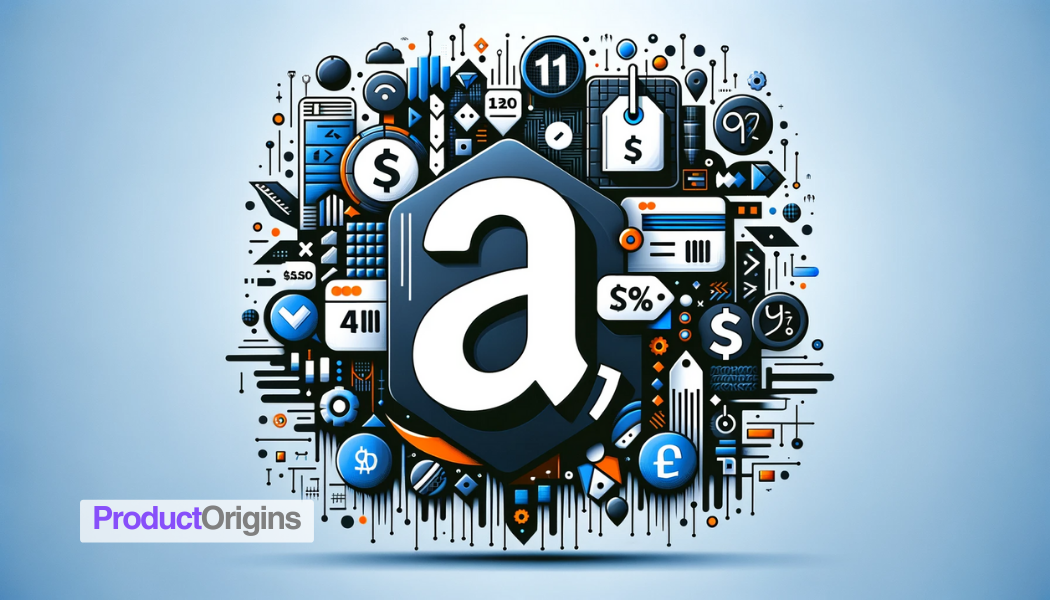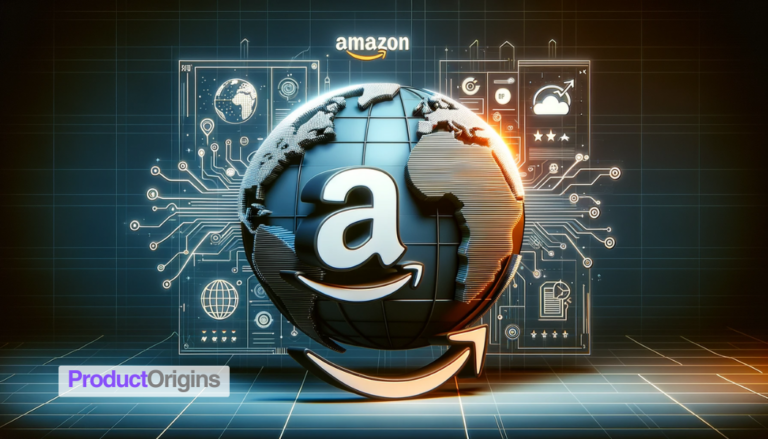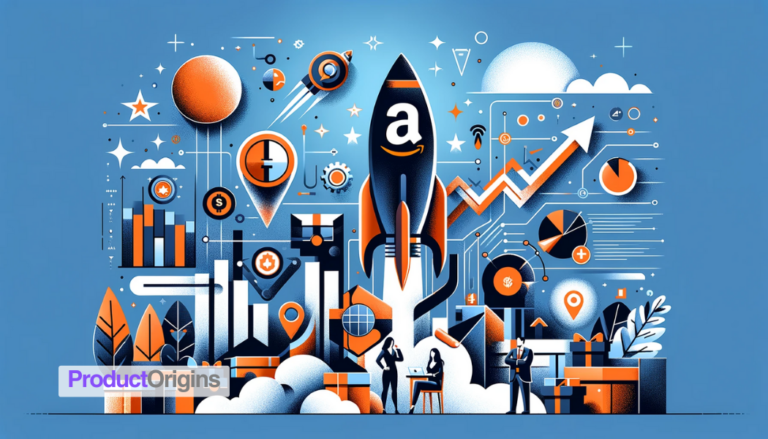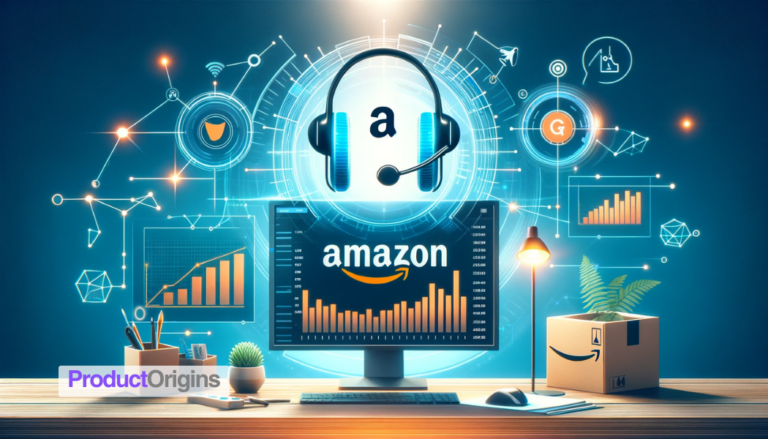As an Amazon seller, I know competitive pricing of products is crucial for driving conversions and gaining market share in the cutthroat e-commerce landscape. However, simply undercutting competitors can quickly erode profit margins if not executed thoughtfully.
In this ultimate guide, I will arm you with proven and powerful strategies to help you achieve a competitive edge on Amazon. You’ll learn how to optimize pricing to maximize your profitability and emerge as a top performer in your niche.
Understanding Amazon’s Pricing Dynamics and Algorithms
The key to developing an effective pricing approach is understanding how Amazon determines which sellers win the Buy Box and surface higher in search.
How the Amazon Buy Box Works
The Amazon Buy Box refers to the white box on the right-hand side of product listings where customers can add items to their cart. Winning the Buy Box earns you the lion’s share of sales for that ASIN.
Amazon’s algorithm analyzes a range of factors to determine Buy Box eligibility, including:
- Price – Lower prices typically have an edge, but getting into a price war can hurt profits.
- Fulfilled by Amazon (FBA) – FBA listings tend to rank higher than merchant-fulfilled ones.
- Listing quality – Optimized titles, images, descriptions, and back-end keywords improve visibility.
- Seller metrics – High ratings, low defect rate, quick shipping, and good customer service boost placement.
Monitoring your and competitors’ listings’ performance can reveal opportunities to improve Buy Box share.
Factors That Influence Buy Box Placement
While pricing is key, focusing solely on undercutting competitors can undermine profitability. Pay attention to:
- Minimum FBA fees – Don’t price below total FBA referral and variable fees, or you’ll lose money on sales.
- Competitor prices – Repricing software helps track rivals’ pricing but doesn’t start a race to the bottom.
- Listing quality score – Keyword-optimized listings can win the Buy Box even at higher prices.
- Inventory depth – Having sufficient stock signals to Amazon that you can meet demand.
- Seller performance – Fast shipping, good customer service, and few defects all contribute to Buy Box’s status.
Balancing these variables takes experience, but the right repricing tools and optimization strategies can give you an edge.
Optimizing Listings for Buy Box Eligibility
Beyond competitive pricing, investing time into optimizing product listings can increase organic traffic and conversions.
- Titles – Include your most important keywords, highlighting key product features.
- Features bullets – Succinctly explain your product’s value proposition and differentiate it from competitors.
- Images – Use infographics to showcase Unique Selling Points (USPs). Ensure high-quality photography.
- Description – Expand on bullets with details; improve readability by formatting text into short paragraphs.
- Backend search terms – Leverage long-tail keywords in your title, features, and description.
- Reviews – Provide good customer service and follow up post-purchase to encourage positive reviews. These boost conversion rates and sales.
After focused optimization, I’ve seen product listings with subpar SEO ranking for top search terms. Pricing competitively supports higher visibility, but a well-crafted listing has tremendous influence over organic traffic and sales.
Balancing Competitiveness and Profitability
When weighing pricing strategies, the most crucial factor is long-term profitability. While momentarily undercutting competitors may increase sales velocity, steep discounts will quickly erode margins. Monitor market trends to identify profitable opportunities.
Analyzing Product Cost Structures
Carefully analyze your profit margin on each product by breaking down:
- Landed costs – Product cost + shipping + customs/duties
- FBA fees – Referral fee percentage + variable closing fee + storage fees
- PPC costs(if applicable) – Campaign spending driving a percentage of sales
- Operational overhead – Accounting, software subscriptions, advertising
Map out every expense from sourcing to sale to determine your true break-even point. This also helps reveal areas for optimization, like negotiating lower supplier costs or improving operational efficiency.
I break down cost structures in a spreadsheet, using historical performance data and sales forecasts to model best/worst case scenarios. This clarifies profitable pricing thresholds before ever changing my Amazon price point.
Setting Break-Even Points and Profit Margins
Next, clearly define your profit margin thresholds, setting a minimum margin that accounts for marketplace fluctuations.
Many sellers apply the cost-plus pricing model:
List price = Landed cost x (1 + profit margin %)
For example:
- Landed cost per unit = $10
- 25% profit margin target
- List price = $10 x (1 + 0.25) = $12.50
When launching a product, I may price at 20-25% margins, increasing to 30-50% once ranked for relevant search terms. Maximizing profits allows reinvesting in branding, expansion, and new product development.
Be sure to configure your repricing software’s floor price at breakeven or slightly above it. Temporarily dipping below this point erodes margins without significantly increasing rank or conversions.
Monitoring Market Trends and Competitor Pricing
While software helps automate pricing adjustments, keeping a pulse on market trends, demand fluctuations, and competitor behavior patterns is crucial.
I track repriced products weekly or bi-weekly, checking the following:
- Live price vs. software floor price – Is an aggressive competitor forcing prices below my thresholds?
- Sales velocity changes – Are sudden demand surges or declines due to external factors like seasonality?
- Buy Box % share – Is competitor behavior or listing optimization impacting my share?
- Review sentiment – Are quality issues arising?
Software features like alert notifications help spot price instability during busy periods.
Seasonal demand variances, inventory shortages, and competitor promotions all impact profitability over time. Identify these external pressures early, so your pricing strategy flexibly aligns with real-time market dynamics.
Utilizing Repricing Software and Automation Tools
Repricing software helps scale pricing management across thousands of SKUs while maintaining profit margin thresholds.
Top Repricing Software for FBA Sellers
Leading solutions include:
- Sellery – Simple UI, robust floor pricing rules. Free up to 3k SKUs.
- RepricerExpress – Advanced filters and custom rules for large catalogs.
- Appeagle – Optimized for branding through custom buyer price bands.
- Teikametrics – Algorithms trained on Amazon data to optimize conversions.
Each tool has strengths and shortcomings, so assess your needs before committing:
- Catalog size – Volume of SKUs to be managed and future projections.
- Platform integration – Which sales channels will it manage pricing for? Just FBA, or expanded to Shopify, Walmart?
- Rule customization – Fine-tune floor prices, promotions, competitor filters, and other adjustable levers.
- Level of automation – Rules-based vs AI/algorithmic; self-managed or outsourced.
- Budget – Month-to-month or annual contracts, one-time vs recurring fees.
Getting the above criteria right ensures efficient ROI and central management of pricing strategy as you scale.
Configuring Software Based on Business Goals
Carefully configure the dashboard and rules engine based on your pricing objectives. Key elements:
- Floor price – Breakeven or slightly above based on profit margin targets.
- Price change frequency – I adjust mine every 8-12 hours to balance agility and stability.
- Competitor filters – Weed out irrationally low prices from unreliable sellers.
- Pricebands – Widen bands during promotions or seasonal spikes to reduce volatility.
Test rule configurations in the sandbox before deploying live. While the platform handles moment-to-moment repricing, my active management and oversight remain essential to long-term success.
Automated vs Manual Repricing Approaches
Fully automated, algorithmic repricing provides effortless management for large inventories; however, it risks price instability from dynamic external variables.
Conversely, purely manual repricing quickly becomes overwhelming at scale. I took this path initially before automation tools, burning hours slotting prices within Amazon’s bulk editor.
A balanced approach works best in my experience: Core pricing decisions are automated based on profitability metrics I define while regularly reviewing dashboard analytics to identify needs for strategy adjustments.
This empowers me to override the algorithms if competitors behave erratically or if market shifts necessitate updating rules. I turn repricing off temporarily for promotions or new product launches to avoid aggressive undercutting.
Automation handles the grunt work so I can focus time on value-added opportunities to grow the business.
Differentiating Your Brand and Offerings
Competing purely on price is an endless race to the bottom. Build defensible positioning through differentiation and added value.
Identifying Your Product’s Unique Value Proposition
Construct differentiation pillars beyond pricing:
- Quality – Rigorously inspect inventory for defects before shipping to Amazon warehouses. Provide customer support for quality issues.
- Brand story – Express your mission and values consistently across touchpoints like email campaigns, product packaging, and listings.
- Niche focus – Specialize around targeted user personas and unmet needs. Align copywriting closely with search intent.
- Customer service – Reply to queries within 12-24 hours, resolve complaints promptly, and follow up on negative reviews.
- Content marketing – Develop expertise guides educating customers around your niche. Publish videos overviewing product features.
These dimensions boost credibility and trust while aligning your offerings with customer needs not fully addressed by commoditized alternatives.
Building Brand Reputation Through Customer Service
While competitors aggressively lower pricing, chances to provide memorable service arise. Recently, a customer complained of receiving a defective unit. Rather than request a return and refund, I sent a replacement overnight.
She appreciated the swift response and revised her negative review to 5 stars while praising our commitment to making things right. Moments like these build brand loyalty beyond commodities.
Actively seek feedback post-purchase, then overdeliver on resolving issues. Customers perceive added value when you spare them return shipping costs and waste their time.
Optimizing Listings to Showcase Key Differentiators
Create enhanced content like infographics or comparison charts highlighting unique specifications. Lead images and titles should express differentiation, too.
For example, if guaranteeing delivery within 2 days through Prime, the title could showcase:
“[Brand] [product name] – Ships within 2 days with Amazon Prime.”
And a support image visualizes this speed advantage against non-Prime competitors.
Reinforcing your product’s differentiated value across the customer journey – from clicking your listing to unboxing and beyond – sustains competitive pricing power and higher profitability.
Considering Legal and Ethical Factors
While some sellers view pricing as the “Wild West” on Amazon, ignoring guidelines has consequences. Protect profitability and your account status through responsible practices.
Avoiding Predatory or Misleading Pricing Practices
Amazon forbids tactics like:
- Artificially inflating product prices to show exaggerated discounts.
- Temporarily pricing below variable cost to eliminate competitors.
Such practices violate Amazon’s Fair Pricing Policy, risking suspension or banning. Maintain honest pricing tied to actual costs and reasonable margins.
Adhering to Amazon’s Evolving Terms of Service
Regularly review Amazon’s policies around pricing, order cancellations, refunds, and more.
For example, their updated Product Pricing Rule was enacted in 2022, requiring clear price-quantity relationships. Failing updated terms risks sanctions or lost selling privileges.
Maintaining Brand Integrity and Reputation
While staying Amazon compliant, preserving customer trust and your brand reputation is the most vital aspect.
Ruthlessly undercutting prices train buyers to view your products as cheap commodities rather than premium offerings reflecting quality craftsmanship and service.
Protect brand equity through reasonable price-value positioning rather than reactionary discounts that deteriorate authority over time. Think marathon, not sprint.
Executing a Cohesive Competitive Pricing Strategy
Competing effectively on Amazon requires balancing pricing optimization efforts across multiple dimensions:
- Monitor market dynamics and adjust repricing rules accordingly
- Analyze listing metrics to identify visibility bottlenecks; invest in SEO optimization to organically boost conversions
- Differentiate brand offerings via enhanced content and memorable customer service
- Uphold price-value integrity through reasonable margins reflecting quality and service levels
This measured approach sustains profitable growth and brand longevity over racing competitors to the pricing bottom.
Automate the grunt work through repricing software while regularly assessing strategy performance and fine-tuning configurations.
Pricing competitively, when aligned with business viability targets and a long-view mentality, drives dominance on Amazon. Master these best practices with patience and commitment to own your niche.
I’m eager to hear your biggest competitive pricing challenges and wins in the comments below!







